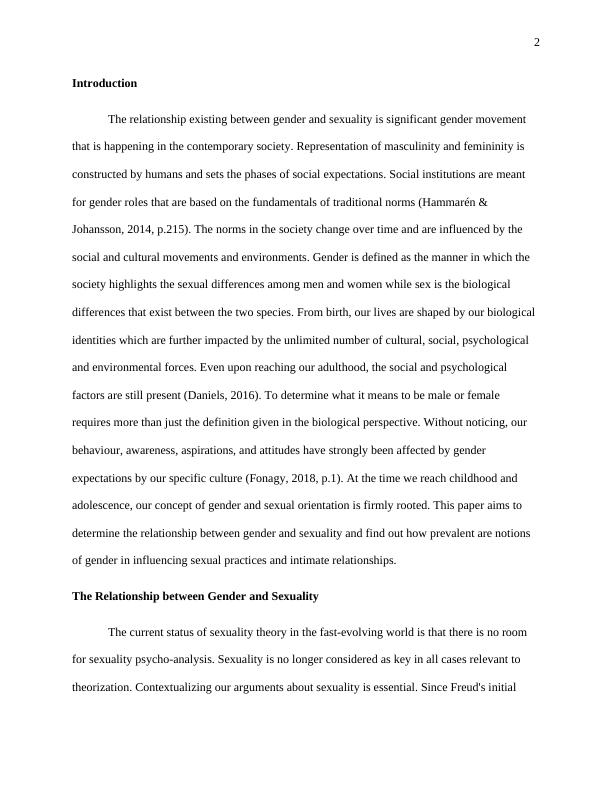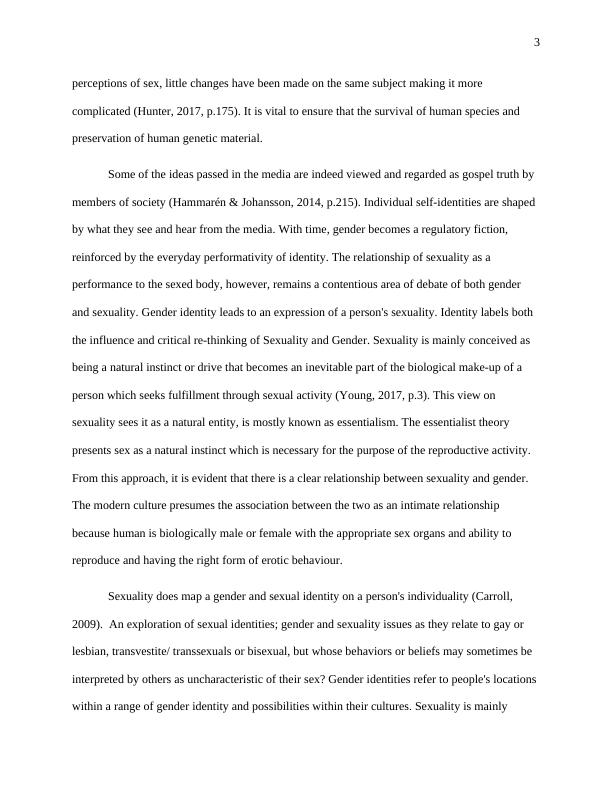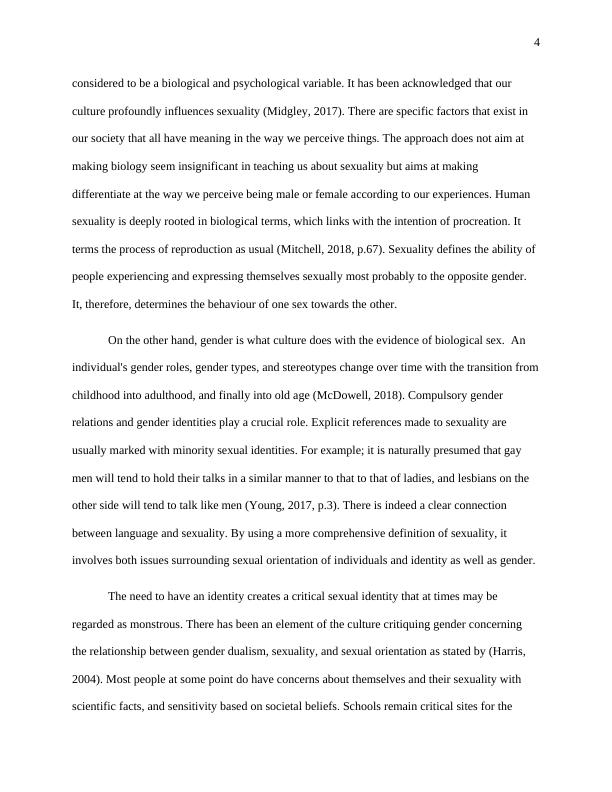The Relationship between Gender and Sexuality: Impact of Gender Norms on Sexual Practices and Intimate Relationships
Evaluate ability to conduct research, analyze sources, and answer essay question using sources.
11 Pages3091 Words63 Views
Added on 2023-06-04
About This Document
This paper explores the relationship between gender and sexuality, the impact of gender norms on sexual practices and intimate relationships. It discusses the role of gender in relationships, the impact of prevalent notions of gender on sexual practices and intimate relationships, and the norms associated with male and female roles in relationships.
The Relationship between Gender and Sexuality: Impact of Gender Norms on Sexual Practices and Intimate Relationships
Evaluate ability to conduct research, analyze sources, and answer essay question using sources.
Added on 2023-06-04
ShareRelated Documents
End of preview
Want to access all the pages? Upload your documents or become a member.
Globalization and Its Complication on Gender and Sexualities
|9
|2360
|454
Understanding Human Sexuality through the Genderbread Model
|8
|1835
|118
Gender and Sexuality Assignment
|13
|3592
|82
Difference between Essentialism and Social Constructivism in Gender and Sexuality
|5
|1075
|352
Exploring Theoretical Perspectives of Gender and Sexuality in Society
|9
|2872
|201
Queer Theory, Gender and Heterosexual Reproduction
|8
|2144
|453




